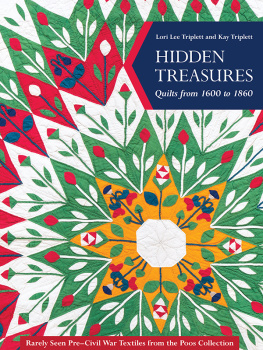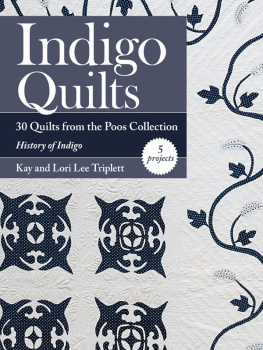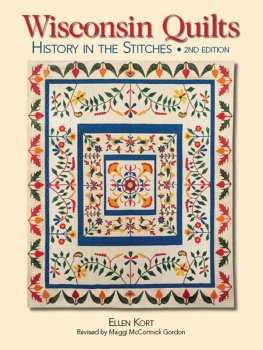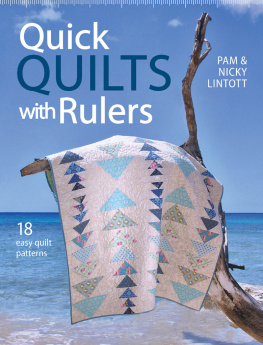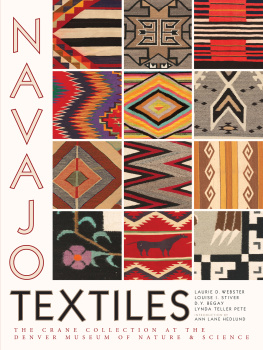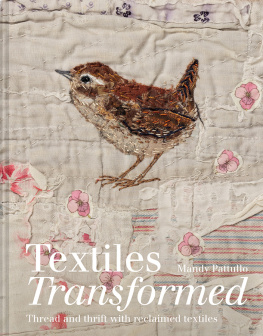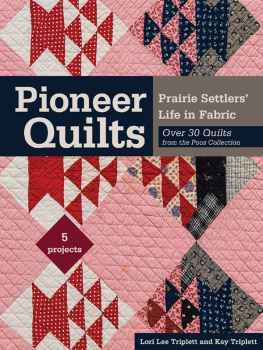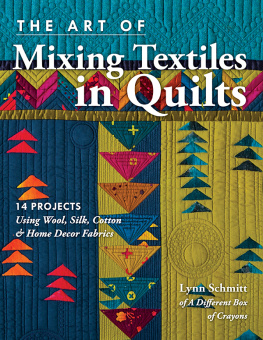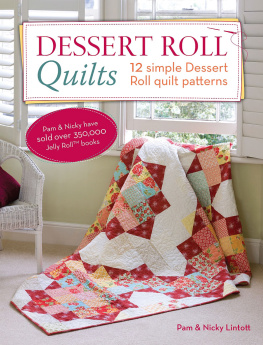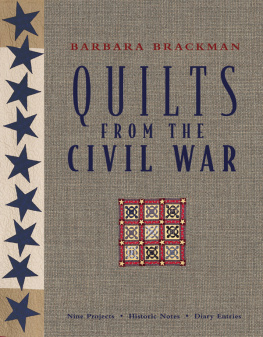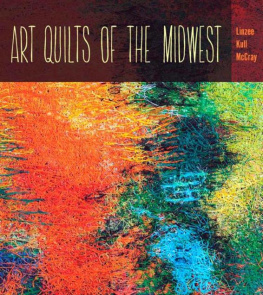Publisher: Amy Marson
Creative Director: Gailen Runge
Acquisitions Editor: Roxane Cerda
Editor: Liz Aneloski
Cover/Book Designer: April Mostek
Production Coordinator: Tim Manibusan
Production Editor: Jennifer Warren
Photo Assistant: Rachel Holmes
Cover photography by Diane Pedersen
Interior photography by Diane Pedersen, unless otherwise noted
Cover quilt: Detail of Starburst Garden Quilt
Title page quilt: Detail of Lydia A. Parker Flower Basket with Birds Quilt
Published by C&T Publishing, Inc., P.O. Box 1456, Lafayette, CA 94549

DEDICATION
To the three generations of textile lovers who went before us: Grandma Boatwright, who taught our grandmother and mother to love fabric and needlework; Grandma Poos, who taught us to quilt; and Mother, who taught us to sew. The love of textiles was our heritage.
ACKNOWLEDGMENTS
Thanks to the American Quilt Study Group for the Lucy Hilty Research Grant and the H. Mark Dunn Research Grant, which have allowed us to expand our research.
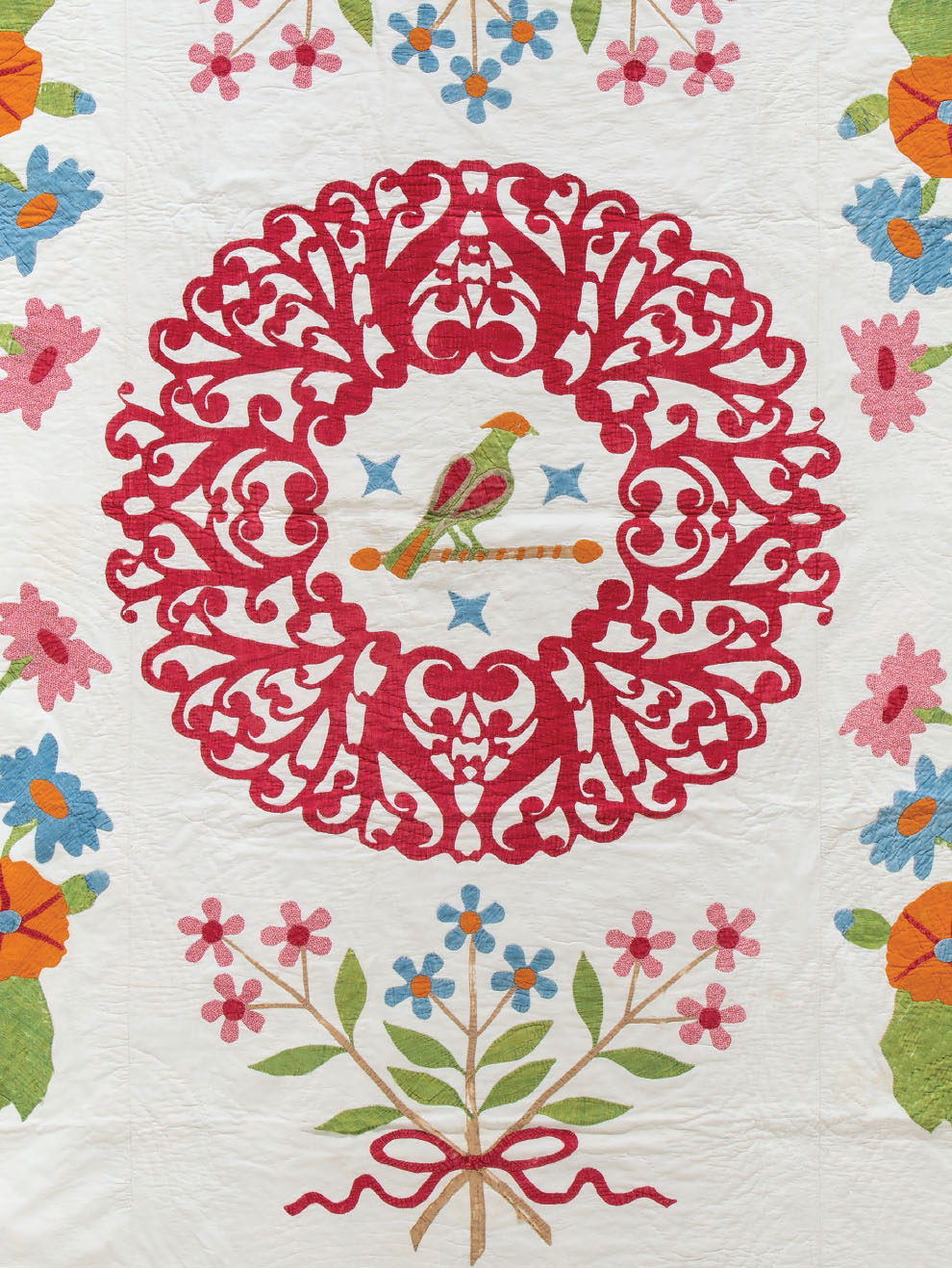
INTRODUCTION
My sister, Kay, began collecting quilts when she was in elementary school. I jokingly say that she never met a quilt she didnt like. However, that doesnt accurately describe her connoisseurs ability to purchase quilts and create a preeminent collection, nor does it fully explain when the group of textiles became the Poos Collection. The road to a collection such as this is not without speed bumps. The process requires seven effective Cs.
Creation of a collection can be based on various motivations, such as building a stash, a love of shopping or preservation, simple appreciation, or the desire to learn more about the items being collected. Kay loves to shop, but more than buying, she also wants to preserve the history of this art form. The need to categorize and group similar items has also led us to build our knowledge about quilts and quilt history.
Calculating and budgeting are crucial for any collection. Not just because restricted resources might limit your purchasing power but also because taking care of the collection requires funds.
Caring for the collection according to industry standards in order to preserve the collection as it should be maintained is yet another step in the process. Caring involves properly storing each individual quilt as well as providing climate-controlled storage for the collection as a whole.
Curation, or managing and organizing, is important to the vitality of the collection. With a collection of this size, cataloging and photographing all the quilts plus the other textiles in the collection is an enormous undertaking. This is our fifth bookwith no repeats among these 100 quiltswhich gives you some idea of the size of the collection. This doesnt even account for the total number of textiles other than quilts, such as international weaving and hand-dyed indigo from around the world. Additionally, the conservation needs of each item need to be addressed as the item ages.
Calibrating or fine-tuning the collection over time allows the collection to effectively fulfill its stated purpose, such as research, preservation, or simply appreciation. If there are categories/ types or time periods to be developed, these themes need to be maintained. For us, the decision to focus on pre-1860 quilts hasnt eliminated other areas of collecting, but it has narrowed the scope. Readers will also recognize several themes, such as stars, birds, and inscribed quilts, which have all been longtime favorites of Kays. Calibrating is crucial to the health of the collection as well, which leads to the next effective C.
Culling, or deaccession, may be vital to allow the collection to survive. Caring for or maintaining quilts that do not fit into the parameters of the collection may impede the ability of the collection to survive as needed. It pulls resources that could be better put to use acquiring and maintaining quilts in the proper category. Deaccession can also provide funds to allow for the longevity of the collection, which leads to the final C.
Conversion, or transition of the collectionin particular if the collection is privately heldis a possibility that needs to be considered. Will the collection remain in the family or be transferred to a nonprofit, government, or business entity?
As you continue reading, please enjoy a small taste of the Poos Collection.
Lori Lee Triplett
ALBUM QUILTS
BALTIMORE ALBUM QUILTS

Baltimore Album Quilt with Rose Border, American, 1848, 100 99
This quilt, which features a variety of early fabrics, including cottons, silks, and silk velvets, is an example of the Designer I style. It was exhibited in 2012 at the Whatcom Museum in Bellingham, Washington, and was published in the The Quilt Engagement Calendar as the Louisa Blessing Quilt because Louisa Blessing signed two of the blocks. However, because it is a friendship quilt, it was likely owned by someone else.
Baltimore Album Quilts (BAQs) were considered the elite of the American quilt art form. These quilts also serve as an example of the trend of inscribed quilts, which started in the 1840s. Previous researchers have studied these quilts extensively since the 1940s; however, new online resources have allowed the research to expand.
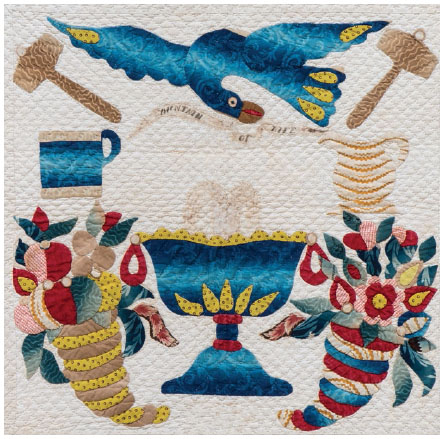
This block was previously published in the Baltimore Album Quilt 2008 Calendar.
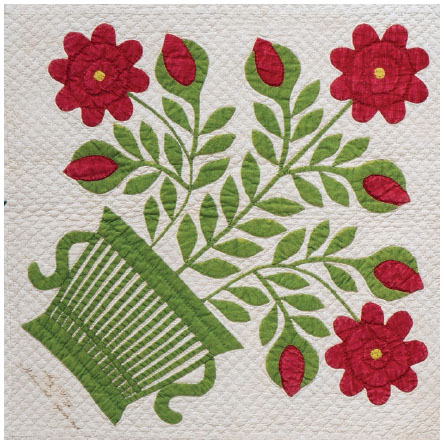
God is love, Mary Haney, Baltimore, MD, Sept 14, 1848. The U.S. Federal Census in 1870 lists a Mary Haney born in 1822, living in Baltimore Ward 16, Maryland, with an occupation of keeping house.
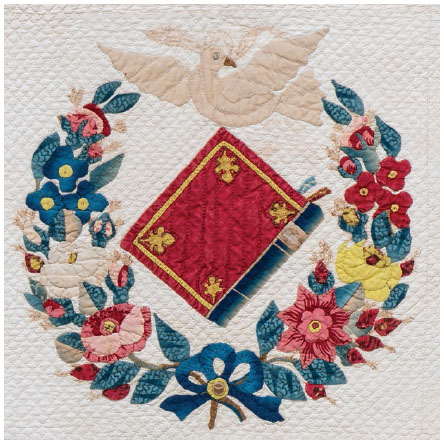
This quilt has three blocks with Bibles in it; however, our focus is on the block beneath the center fountain block. Two other BAQs from the Lovely Lane Museum in Baltimore, Maryland, have the exact same block in them: the Reverend Henry Wilson BAQ and the Reverend C. Roberts BAQ. Nine additional BAQs have very similar blocks.

Baltimore Album Quilt with Stair-Step Border, American, c. 1850, 100 100
This is an example of the Designer II style of quilts, which tend to be simpler and less pictorial in nature.
The majority of BAQs inscribed with names fit the pattern of quilts made with blocks signed by friends and family members. A large number of BAQs were made for clergy, primarily Methodist or German Reformed. It may be that the larger number of Methodist quilts simply reflects the larger number of Methodist churches. Another contributing factor may have been the policy of the Methodist church to reassign pastors every two years. However, BAQs have also been traced to Catholic and even Jewish communities.
Next page
